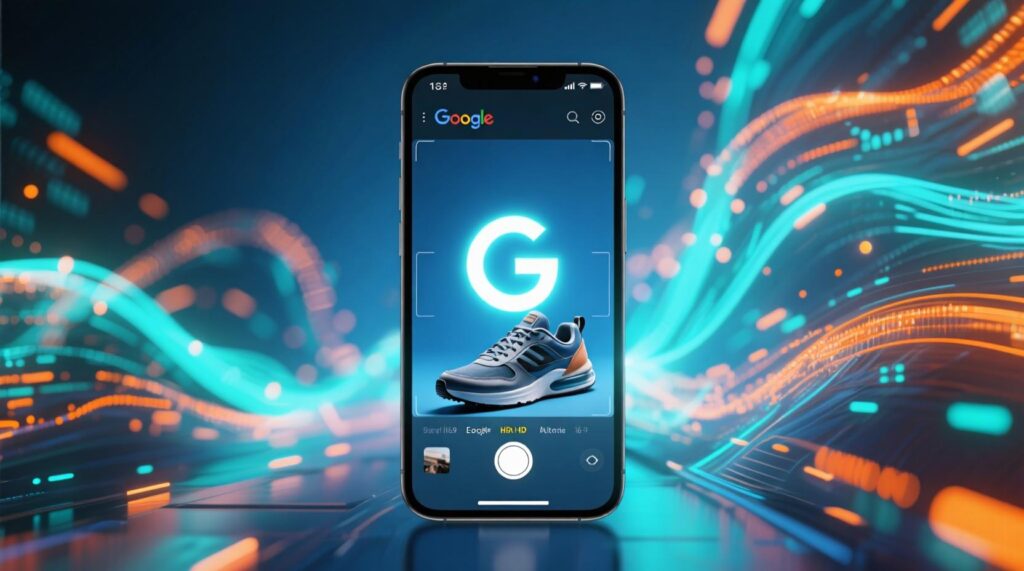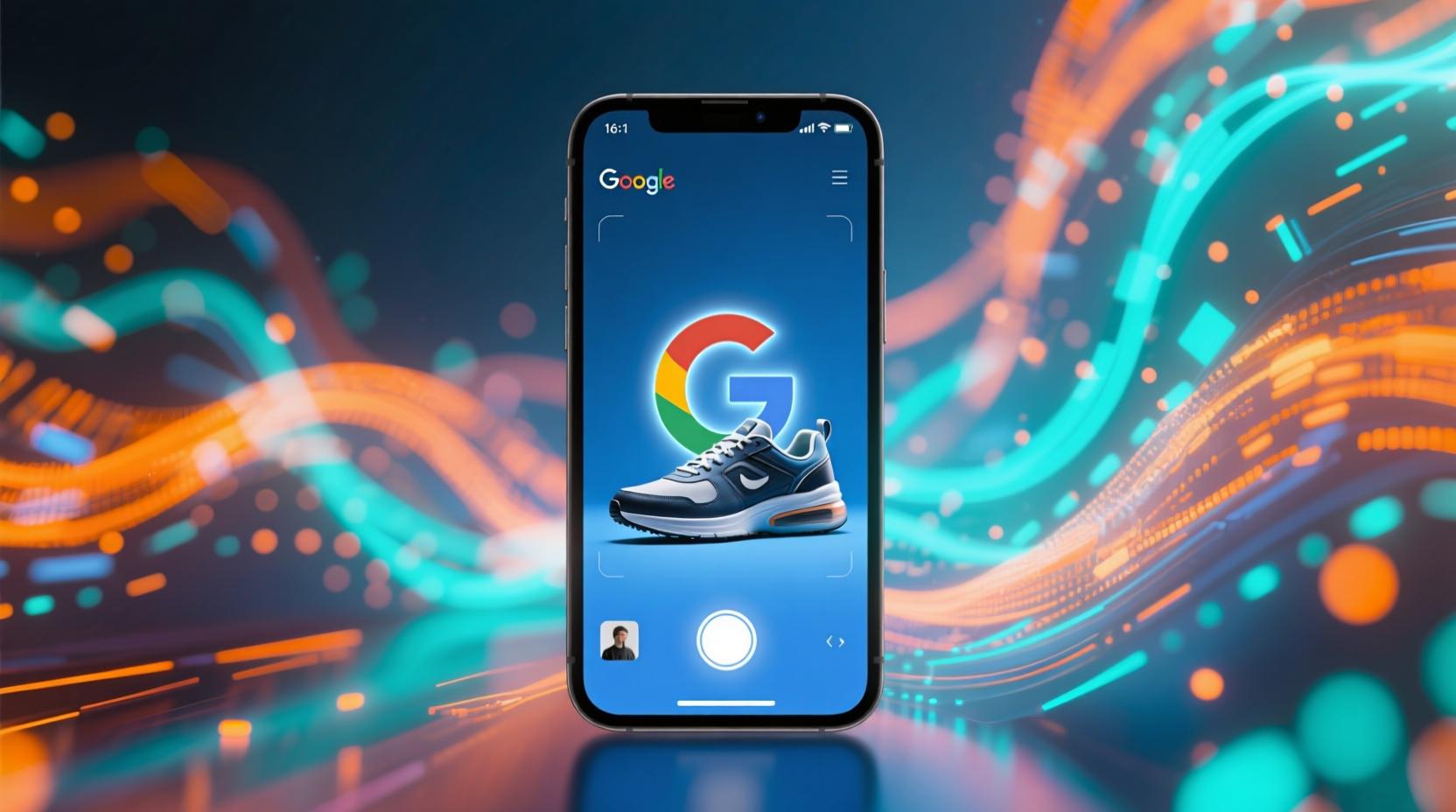Remember that time you snapped a picture of your friend’s amazing sneakers because you had to have a pair? Or maybe you spotted a gorgeous lamp in a cafe and immediately searched using its image? That instinct? That’s the power of visual search exploding right now. And Google VEO 3 (Visual Engine Optimization) is your golden ticket to placing your products directly in front of users at that exact moment of inspiration.
Forget keyword guesswork. VEO 3 leverages cutting-edge AI to understand images and context, letting shoppers find your products using photos, screenshots, or even live camera views. It’s not just the future; it’s actively reshaping how people shop today. Miss this wave, and you risk becoming invisible to a massive, visually-driven audience.
Ready to harness this game-changer? Buckle up! This guide cuts through the hype, giving you a practical, step-by-step roadmap to create effective, high-converting Google VEO 3 ads. We’ll ditch the robotic jargon and focus on what actually works, drawing on real-world examples and best practices.

Why Google VEO 3 Ads Are Your Next Big Growth Engine (Spoiler: It’s More Than Just Cool Tech)
Let’s be real: jumping on every new Google feature can feel exhausting. So, why VEO 3? Because the numbers and the user behavior paint an undeniable picture:
- Visual Search is Booming: Studies show nearly 40% of shoppers actively use visual search tools. Platforms like Pinterest Lens and Google Lens see billions of searches monthly. People are wired visually – we process images 60,000 times faster than text! (Source: MIT research on visual processing).
- Capturing High-Intent Moments: When someone searches visually, it’s often driven by immediate desire or need. They see something they want right now. Your VEO ad appears directly alongside visually similar products, putting you in the prime position to capture that intent. It’s like having your storefront pop up instantly wherever someone spots something similar to what you sell.
- Skyrocketing Engagement: Visuals grab attention. Ads triggered by visual searches often see significantly higher click-through rates (CTRs) compared to traditional text-based shopping ads. Users are already in a “discovery” mindset.
- Reduced Friction: Instead of struggling to describe an item (“red floral midi dress with puffy sleeves?”), users simply show Google. VEO 3’s AI does the heavy lifting, matching the visual attributes to your products with impressive accuracy.
- Future-Proofing: AI and visual search aren’t fads. Google is pouring resources into this technology. Getting in early means building expertise and capturing market share before competitors catch up.

Real-Life Win: “Sweet Spot Bakery” (a small artisanal donut shop) started using VEO 3. They optimized high-quality product images showing their unique, colorful donuts. When users searched images of gourmet donuts or desserts in their city, Sweet Spot’s ads started appearing. Result? A 35% increase in foot traffic from “saw it, wanted it” visual searches within 3 months. Their visually stunning product was perfectly matched to the visual search intent.
Gearing Up: The Essential Foundations Before You Launch VEO 3 Ads
You can’t build a house on sand. Before creating dazzling VEO ads, ensure your digital storefront is rock-solid:

- A Robust Google Merchant Center (GMC) Account: This is NON-NEGOTIABLE. VEO 3 ads pull product data directly from your GMC feed.
- Action: If you don’t have one, set it up meticulously. Ensure your business information is 100% accurate and verified.
- Feed Perfection is Key: Your product feed is the lifeblood. Invest time here:
- High-Resolution Images: This is VEO’s fuel! Use multiple high-quality (at least 800×800 pixels, 1600×1600 preferred), clear, well-lit images against neutral backgrounds. Show different angles, details, and context (e.g., the lamp in a living room setting). Avoid watermarks or promotional text overlays.
- Accurate & Detailed Product Titles: Include key attributes (brand, color, size, material, key feature) naturally.
Women's Nike Air Max 90 Sneakers - White/Blackis better than justNike Shoes. - Rich Descriptions: Go beyond bullet points. Describe the product compellingly, focusing on benefits, materials, and unique selling points. Include relevant keywords people might visually search for (e.g., “floral print,” “mid-century modern,” “wireless charging”).
- Precise Attributes: Fill out EVERY relevant attribute in GMC:
color,size,material,pattern,gender,age_group,product_type,google_product_category. The more data you give Google’s AI, the better it can match your products to visual searches. - GTINs (Where Applicable): Provide Global Trade Item Numbers for brand credibility and matching accuracy.
- Fix Errors RELENTLESSLY: GMC disapprovals will cripple your VEO efforts. Monitor the Diagnostics tab daily and address issues immediately.
- A Linked & Active Google Ads Account: Your VEO campaigns live here. Ensure it’s properly linked to your GMC account.
- Action: Verify the linkage is active and check billing settings.
- High-Quality, Unique Visual Assets: Beyond your standard product shots, think about the visual search journey.
- Context Matters: Include lifestyle images showing your product in use (e.g., someone wearing the dress, the blender making a smoothie, the chair in a cozy reading nook).
- Detail Shots: Close-ups of textures, patterns, logos, or unique features.
- Variety: Show different colors/variants clearly. Consider short video clips (supported in some visual ad formats).
Expert Insight: *”The biggest mistake I see? Businesses treating their GMC feed as an afterthought. For VEO 3, your feed isn’t just data; it’s your visual storefront. Pixel-perfect images and meticulously filled attributes are your absolute baseline for success. Without this, even the best campaign strategy will fall flat.”* – Sarah Chen, Director of E-commerce Strategy, Global Retail Brand.
Your Step-by-Step Playbook: Creating Google VEO 3 Ads
Finally! Time to build. Don’t worry, the process is logical. Follow these steps:
Step 1: Accessing the Right Campaign Type (No, It’s Not “VEO 3”)
Here’s a common point of confusion: There isn’t a separate “VEO 3” campaign type. VEO functionality is integrated into Google’s existing visual ad formats, primarily within Performance Max (PMax) campaigns and Shopping campaigns.
- Performance Max (Recommended for Most): This is Google’s powerhouse AI-driven campaign type. It automatically accesses inventory-aware signals (including visual matches from VEO) across all Google networks (Search, Discover, YouTube, Gmail, Display) to find conversions. It’s often the most efficient way to leverage VEO.
- Standard Shopping Campaigns: You can also enable visual enhancements within traditional Shopping campaigns.
How to Enable Visual Features:
- In Performance Max:
- When creating a new PMax campaign, select your goal (Sales, Leads, etc.).
- Under “Inventory filter,” ensure you’re selecting the correct Merchant Center feed.
- Crucially, during asset group setup, upload high-quality images and videos. Google uses these assets alongside your product feed images to match visual searches. Provide a diverse mix (lifestyle, product close-ups, logos).
- Google’s AI will automatically utilize these assets and your feed data to show your products in response to relevant visual searches across surfaces.
- In Shopping Campaigns:
- Within your Shopping campaign settings, look for an option like “Show products to people who interact with your images across Google” or similar phrasing related to “visual experiences.” Ensure this is turned ON.
Step 2: Feeding the Beast: Optimizing Assets for VEO Success
This is where VEO 3 truly comes alive. Your assets tell the AI what your products look like and the context they fit into.
- Prioritize Stellar Visuals (Again!): We can’t stress this enough. Use professional-grade photography. Blurry, dark, or cluttered images won’t cut it. Show products clearly and attractively.
- Leverage All Asset Slots (PMax): Fill every available image and video slot in your PMax asset groups. Provide variety:
- Product on White Background: Essential for clear identification.
- Lifestyle Imagery: Show the product in a relatable setting.
- Detail Shots: Highlight craftsmanship, texture, or unique features.
- Brand Imagery: Logos, storefronts (for local), brand ambassadors.
- Short Videos (15-30 sec): Demonstrations, assembly, or simple beauty shots.
- Use Relevant, Descriptive Filenames:
red-wool-winter-coat-model.jpgis better thanIMG_12345.jpg. This provides subtle context clues. - Alt Text Matters (If Uploading via Website): If you reference images hosted on your site in Merchant Center, ensure they have descriptive alt text.
- Consider Image Extensions (Shopping Campaigns): While not strictly VEO, using Image Extensions in Shopping ads gives users more visual context directly on the search results page, potentially increasing CTR.
Step 3: Structuring for Success: Campaign Settings & Bidding
- Campaign Goals: Align with your objective – usually “Sales” or “Leads.”
- Budget: Start conservatively and monitor performance. VEO can be efficient, but costs depend on competition.
- Bidding Strategy: For PMax, “Maximize Conversions” or “Maximize Conversion Value” (with a target ROAS if you have historical data) are generally recommended, letting Google’s AI optimize for visual placements. For Shopping, similar smart bidding applies.
- Audience Signals (PMax): While targeting is largely automated in PMax, providing audience signals (e.g., your remarketing lists, customer email lists, or relevant affinity/demographic audiences) helps guide the AI initially. Don’t rely solely on broad signals; layer in your high-value audiences.
- Location & Language: Target your relevant markets precisely.
Step 4: Launch & Initial Monitoring
- Hit “Launch”! But your job isn’t done.
- Patience is Key: AI needs data. Give your campaign at least 2-3 weeks (or significant impressions/clicks) before making drastic judgments. Initial learning periods are normal.
- Monitor Key Metrics: Keep a close eye on:
- Impressions: Are you getting visibility?
- Clicks & CTR: Is your visual presence enticing?
- Conversions & Conversion Value: The ultimate goal – is it driving results?
- Cost Per Conversion (CPA) / Return on Ad Spend (ROAS): Is it efficient?
- Search Terms (Indirectly): While PMax doesn’t show traditional search terms, check your broader Google Ads “Insights” page and your Google Analytics 4 (GA4) traffic sources for clues on what queries (including potential visual ones) are driving traffic. Look for sessions originating from Google Images or Lens.
Beyond the Basics: Advanced VEO 3 Optimization Tactics
You’ve launched. Now, let’s refine and squeeze more performance out of your VEO efforts:
- Feed Optimization Deep Dive:
- Custom Labels: Use these in GMC to segment products strategically (e.g.,
high-margin,best-sellers,new-arrivals,visual-hero-products). You can then create separate PMax campaigns or asset groups targeting these labels with specific budgets or creative. - Product Ratings & Reviews: Enable and encourage them! Star ratings significantly boost ad CTR and trust, including on visual placements. Data shows ads with reviews can see up to a 10% increase in CTR.
- Promotions & Special Offers: Feed these into GMC. Price drops or special deals highlighted in your ad can be a powerful visual trigger.
- Custom Labels: Use these in GMC to segment products strategically (e.g.,
- Asset Group Refinement (PMax):
- Test Creatives: Don’t set and forget. Regularly test new images and videos within your asset groups. Swap out lower performers. Try different lifestyle contexts or messaging angles.
- Leverage Audience Exclusions (Cautiously): While broad reach is PMax’s strength, you can add exclusions for known low-value audiences if you have robust data proving they don’t convert.
- Leverage GA4 for Deeper Insights:
- Track Conversions Religiously: Ensure your purchase or lead tracking is flawless.
- Analyze User Journeys: Look at paths users take. Do visual searches lead to higher engagement or faster conversions?
- Use the “Acquisition” Reports: Explore traffic from Google channels. Look for sessions attributed to Google Images – this is a strong indicator of visual search impact, even if the exact query isn’t shown in Ads. (Note: Attribution is complex, but trends are valuable).
- Competitive Analysis (Visually):
- Perform visual searches related to your products. See whose ads appear? Analyze their image quality, presentation, and offers. What can you learn or do better?
Real-Life Tactic: “Urban Threads Apparel” used custom labels in GMC to tag products featured in their latest influencer collaborations. They created a dedicated PMax campaign targeting just these labeled items, using the exact lifestyle images from the influencers’ posts in the asset groups. Result? A 50% higher CTR on these specific products compared to their general campaign, tapping directly into the visual inspiration generated by the influencers.
Navigating Challenges & Common VEO 3 Pitfalls
It’s not always smooth sailing. Be prepared for these common hurdles:
- “I’m Not Seeing Impressions!”
- Diagnose: Check GMC feed status (any disapprovals?). Verify campaign is active, budget is sufficient, bidding is appropriate. Are your assets truly high-quality and diverse? Did you enable visual features correctly?
- Fix: Resolve feed errors. Increase budget slightly. Enhance image quality/variety. Double-check campaign settings. Be patient during learning.
- “Clicks But No Conversions!”
- Diagnose: Is your landing page experience poor? Slow load times? Product out of stock? Price mismatch? Unclear checkout? Are you targeting the right visual intent?
- Fix: Audit landing page speed and mobile-friendliness ruthlessly. Ensure perfect inventory sync. Match ad promises to page reality. Consider tightening audience signals if targeting seems too broad. Implement strong retargeting.
- Attribution Ambiguity: It can be hard to directly see a “VEO search term” that led to a conversion, especially in PMax.
- Mitigation: Focus on overall campaign performance lift after enabling visual features. Use GA4 trends (Google Images traffic + conversions). Trust the AI when overall metrics (conversions, ROAS) are positive.
- Creative Fatigue: Users stop responding to the same visuals.
- Mitigation: Make refreshing creative assets (images, videos) a regular part of your optimization cadence (e.g., monthly or quarterly). Test new concepts.
Expert Insight: *”The biggest pitfall is expecting instant perfection. VEO 3 relies on sophisticated AI learning patterns. Give it quality fuel (images, data) and time. Monitor the trend in key business metrics – sales, leads, customer acquisition cost – over several weeks, not just day-to-day fluctuations in the Ads interface.”* – David Park, Head of Paid Search, Leading Digital Agency.
The Future is Visual: Where VEO 3 is Headed (And How to Stay Ahead)
Google VEO 3 isn’t static. AI evolves rapidly. Here’s what’s on the horizon and how to prepare:
- AI Getting Smarter (Context & Intent): Expect even better understanding of scene context (e.g., recognizing a picnic setting and suggesting relevant baskets, blankets, and food) and deeper intent (e.g., distinguishing between “find this exact chair” vs. “find chairs like this style”).
- Your Action: Focus even more on rich product attributes and lifestyle imagery showing products in diverse, realistic contexts.
- Augmented Reality (AR) Integration: Imagine users virtually placing your furniture in their room via Lens before seeing your ad. VEO will likely integrate more seamlessly with AR try-on experiences.
- Your Action: Explore AR capabilities if relevant to your products (e.g., sunglasses, makeup, furniture). Provide 3D models if possible (supported in Merchant Center).
- Video Becomes Paramount: As visual search expands, short, engaging video assets demonstrating products will become crucial for VEO matching and user engagement.
- Your Action: Invest in simple, high-quality product videos. Show functionality, benefits, and real-life use.
- Cross-Platform Visual Ecosystems: Visual search won’t be siloed on Google. Integration with social platforms (Instagram, TikTok Shop) and broader e-commerce visual databases might emerge.
- Your Action: Maintain consistent, high-quality visual branding across all platforms. Ensure your product images are optimized everywhere.
Your Visual Advertising Advantage Starts Now
Creating successful Google VEO 3 ads isn’t about mastering a single, hidden button. It’s about building a rock-solid foundation (your Merchant Center feed!), embracing the power of stunning visuals, leveraging the right campaign types (Performance Max is your friend!), and optimizing relentlessly based on data. It requires understanding that you’re feeding an AI visual brain and trusting it to find your ideal customers in the moments they’re most inspired.
The shift to visual and multimodal search isn’t slowing down; it’s accelerating. By implementing the steps in this guide – focusing on image quality, detailed data, smart campaign structures, and continuous optimization – you’re not just running ads; you’re positioning your business at the forefront of how the next generation discovers and shops.
Don’t wait for your competitors to become the visual search result. Take these steps today:
- Audit Your GMC Feed: Is it flawless? Are images pristine? Are attributes overflowing with detail?
- Review/Set Up PMax: Are you using it? Are your asset groups packed with diverse, high-quality visuals?
- Enable Visual Features: Double-check your Shopping campaign settings.
- Define One Test: Pick a product category or custom label group to focus your initial VEO efforts. Measure the impact.
- Schedule Creative Refresh: Mark your calendar to update images/videos quarterly.
Q1: What exactly is Google VEO 3?
Google VEO 3 (Visual Engine Optimization) is Google’s AI-powered technology that matches your product ads to users performing visual searches (using Google Lens, Google Images, or camera searches). It understands images, context, and attributes – not just keywords – to show your products when someone searches for something visually similar.
Q2: Do I need a special campaign type for VEO 3?
A: No. VEO 3 functionality is integrated into existing campaigns, primarily Performance Max (PMax) and Shopping campaigns. You enable it by optimizing your product feed and assets within these campaign types.
Q3: Is a Google Merchant Center account mandatory?
A: Absolutely YES. Your VEO 3 ads pull product data and images directly from your Merchant Center feed. A flawless, attribute-rich feed with high-resolution images (min 800×800, ideally 1600×1600) is the non-negotiable foundation.
Q4: How is VEO 3 different from regular Shopping Ads?
A: Regular Shopping Ads primarily respond to textual searches. VEO 3 targets visual intent. Your ad appears when someone searches using an image or their camera, capturing high-intent moments where users see something they want but might not know how to describe in words.
Q5: What kind of results can I expect?
A: Businesses leveraging VEO effectively often see higher click-through rates (CTR) and capture high-intent shoppers. For example, “Sweet Spot Bakery” saw a 35% increase in foot traffic by appearing for visual searches of gourmet donuts. Results depend heavily on image quality and feed optimization.
Q6: Is VEO 3 just a fad?
A: No. Visual search is exploding. Nearly 40% of shoppers use visual search tools, and Google is heavily investing in AI and Lens technology. VEO 3 is key to future-proofing your visibility as search behavior evolves.
Q7: What’s the first step to create a VEO 3 ad?
A: Audit and optimize your Google Merchant Center feed. Ensure every product has multiple high-quality images (white background + lifestyle), detailed titles/descriptions, and all relevant attributes (color, size, material, pattern, etc.) filled out accurately. Fix all feed errors.
